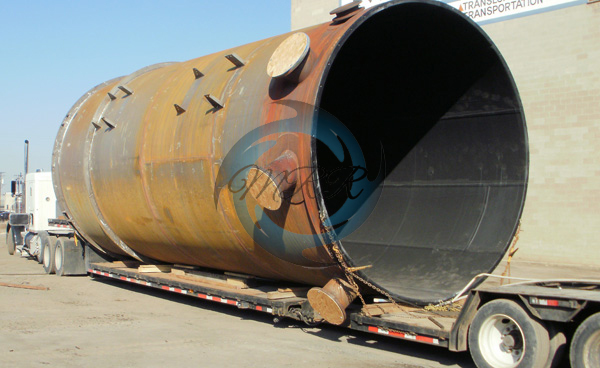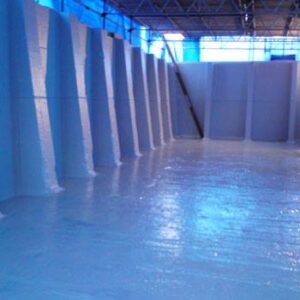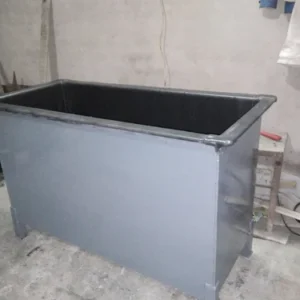Rubber Lining On Tank
Description
Rubber linings are a common way to protect the insides of storage tanks and pressure vessels from corrosive and abrasive environments. Rubber sheets are applied to the metal surface of the tank or vessel to create a barrier between the corrosive material and the vessel. This barrier helps to protect the equipment and extend its life by preventing chemical attacks.
Here are some things to consider when applying rubber lining to a tank:
Surface Preparation:– The metal surface must be free from oil, paint, scales, rust, etc. This is generally removed with the help of sand blasting or shot blasting.
Rubber Materials:– Different rubber materials can be used depending on the application, such as Nitrile, Ebonite rubber lining.
Lining Thickness:– The thickness of the lining can vary depending on the material used. For example, the lining thickness for Neoprene and Ebonite can vary between 0.5- 20mm.
Technical Specification
Here are some technical specifications for rubber lining:
Rubber Type:– Can be natural rubber, neoprene, ebonite, nitrile , or any synthetic rubber.
Hardness:– For soft rubber, 65 ± 5 Shore ‘A’, and for hard rubber, 85 ± 5 Shore ‘A’, or as per client requirement.
Thickness:– Typically, rubber sheets are supplied at a thickness from 1/8” (3mm) -1/2” (12mm), but most industrial lining work utilizes 1/4”(6mm) sheet stock.
Vulcanization:– The process by which rubber changes from plastic state to elastic state, which is carried out in an autoclave. The temperature and pressure depend upon the rubber compound and thickness of lining.
Testing:– Before and after the rubber lining is cured, it must be tested with a spark tester to determine the presence of pinhole leaks, punctures, cuts, etc.
Application
In recent years a number of ships have been fitted with rubber lined tanks, for the transport of phosphoric acid, waste acids and hydrochloric acid. The mild steel surfaces to be lined should be prepared by grinding away rough weld beads, surface defects, weld splatter etc.
There are number of applications where rubber lining is used; water and wastewater treatment tanks, piping and fittings, purification vessels, fume and ducts, storage tanks, dosing tanks, clarifier and thickener tanks and pump components etc.



